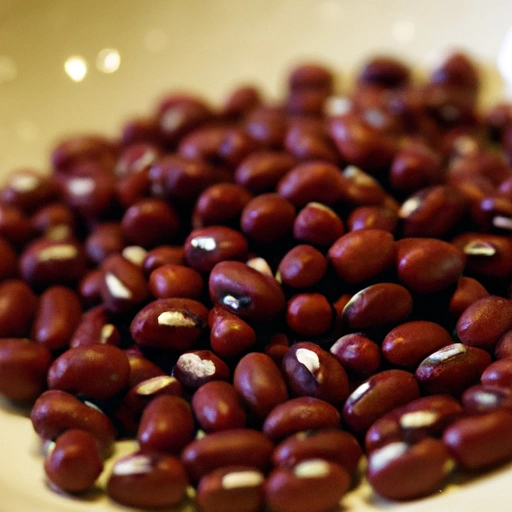Sweet Bean
Description

Sweet bean, also known as adzuki bean or azuki bean, is a small reddish-brown legume with a white ridge along one edge. It is a staple in East Asian cuisine and has been gaining popularity in American and European kitchens. Sweet beans are known for their sweet, nutty flavor and are commonly used in both sweet and savory dishes. With the globalization of food, sweet beans have become an ingredient of interest for cooks and food enthusiasts around the world, incorporating into recipes that require customary measurements like cups and tablespoons (American) as well as grams and milliliters (European).
Common uses
In culinary contexts, sweet beans are often used in the form of pastes, whole beans, or as sprouts. They are a common ingredient in confectioneries, such as Japanese 'anko' (sweet red bean paste), and are also included in grain dishes, salads, and as a topping for ice cream or shaved ice desserts.
Nutritional value
Calories
Sweet beans are low in calories, providing a healthy energy source. One cup (about 230 grams) of cooked sweet beans contains approximately 294 calories.
Protein
With about 17.3 grams of protein per cup, sweet beans are an excellent source of plant-based protein, making them a favorite among vegetarians and vegans.
Fat
These beans are low in fat, with one cup containing less than 0.5 grams of fat, which is mostly unsaturated and beneficial for heart health.
Carbohydrates
Sweet beans provide a rich source of carbohydrates, with about 57 grams per cup, which includes a significant amount of dietary fiber.
Vitamins
They are high in B-vitamins, particularly folic acid, which is essential for cell growth and metabolism.
Minerals
Sweet beans are high in minerals such as potassium, iron, and magnesium, which are vital for various bodily functions.
Health benefits
Sweet beans are associated with numerous health benefits, including aiding digestion due to their high fiber content, helping control blood sugar levels, and contributing to heart health by being low in fat and sodium. The protein content supports muscle building and repair, while the vitamins and minerals boost overall wellbeing.
Potential risks
While sweet beans are generally safe to consume, they contain compounds that can interfere with nutrient absorption if not prepared properly. It is important to cook them thoroughly to reduce the presence of these compounds. People with certain health conditions should also be mindful of their bean intake and consult with a healthcare provider.
Common recipes
Popular recipes include red bean paste used in Asian desserts, sweet bean ice cream, and sweet bean soups. They can also be found in mixed rice dishes and confectionery items like mochi and mooncakes.
Cooking methods
The beans are often boiled or stewed, and can be slow-cooked to make a rich, sweet paste. They can also be sprouted to use in salads or stir-fries.
Pairing with other ingredients
Sweet beans pair well with glutinous rice, matcha, coconut, and chestnuts. They also complement savory ingredients like pork and spices in heartier dishes.
Summary
Sweet bean, with its pleasant taste and versatility, is embraced by various cuisines around the world. Whether used in traditional Asian desserts or innovative Western dishes, sweet beans offer a bounty of nutritional benefits and add a unique flavor to any meal. As a global ingredient, they provide a delicious way to experience and connect with different cultures through food.